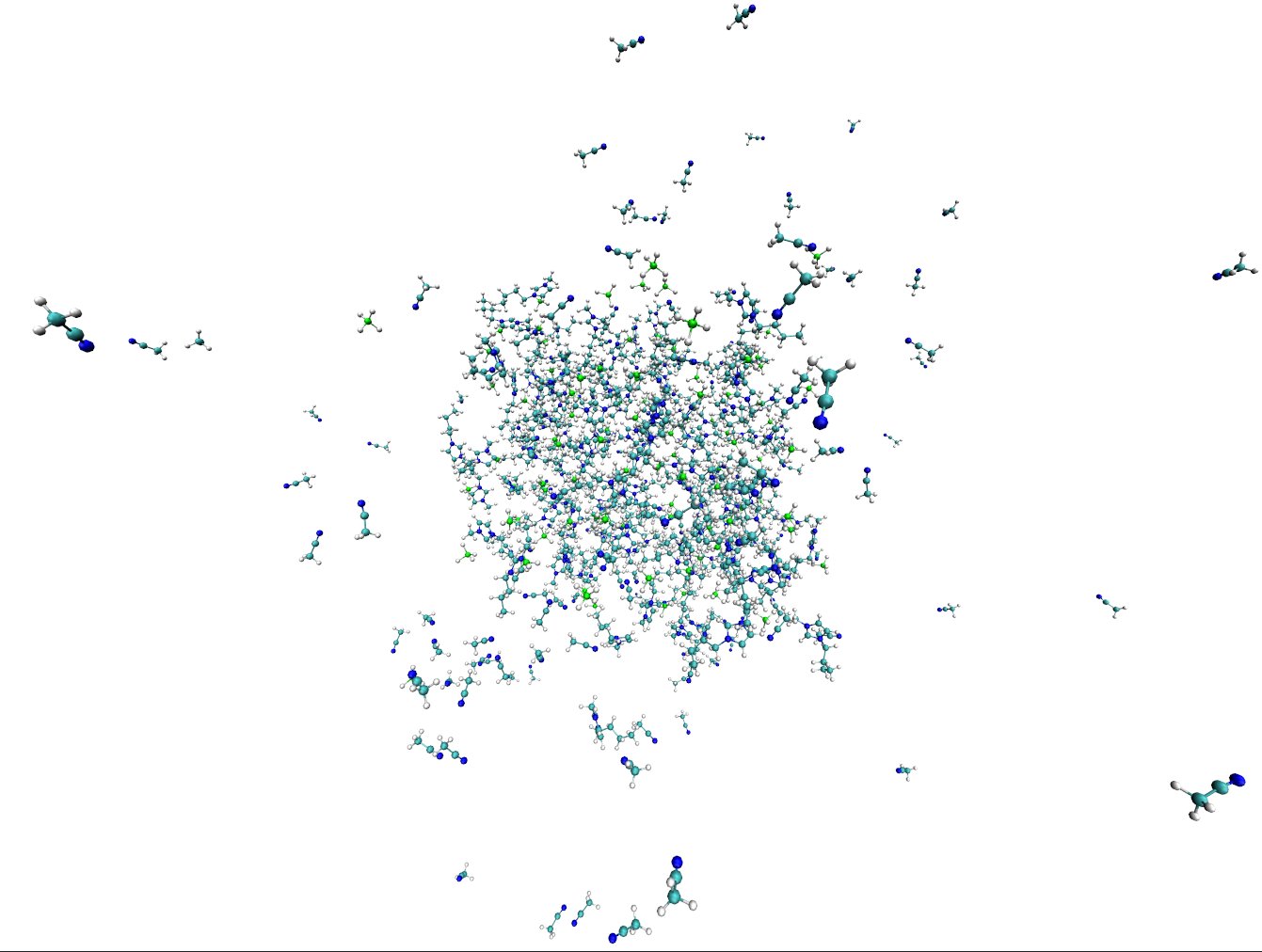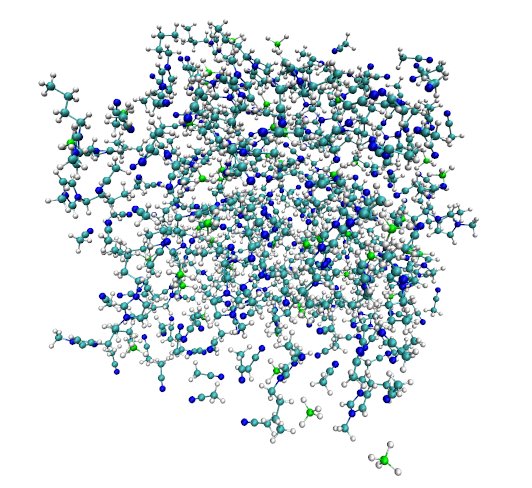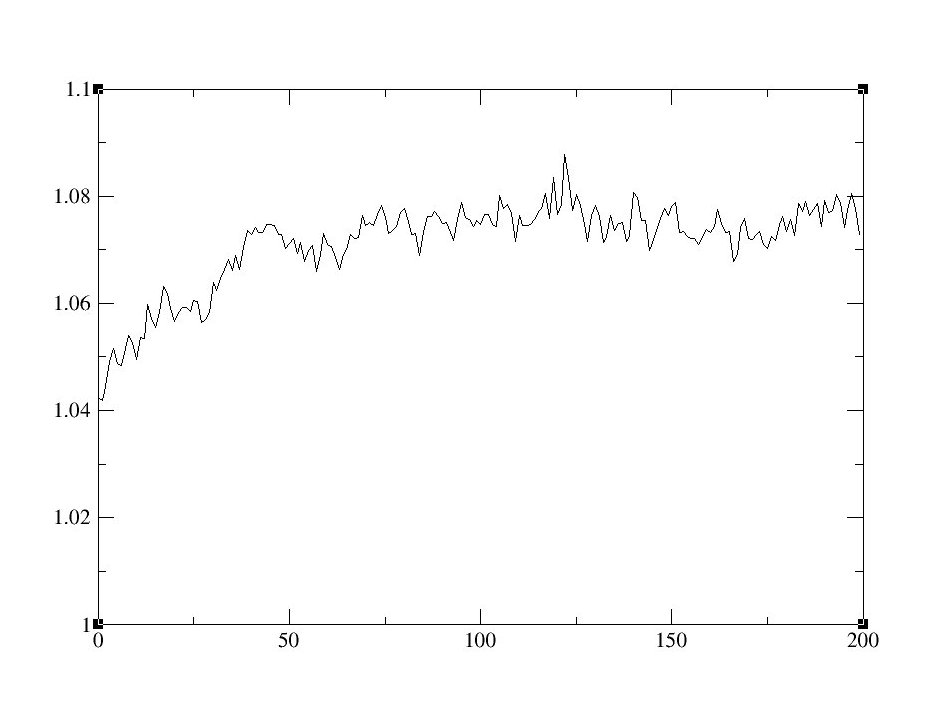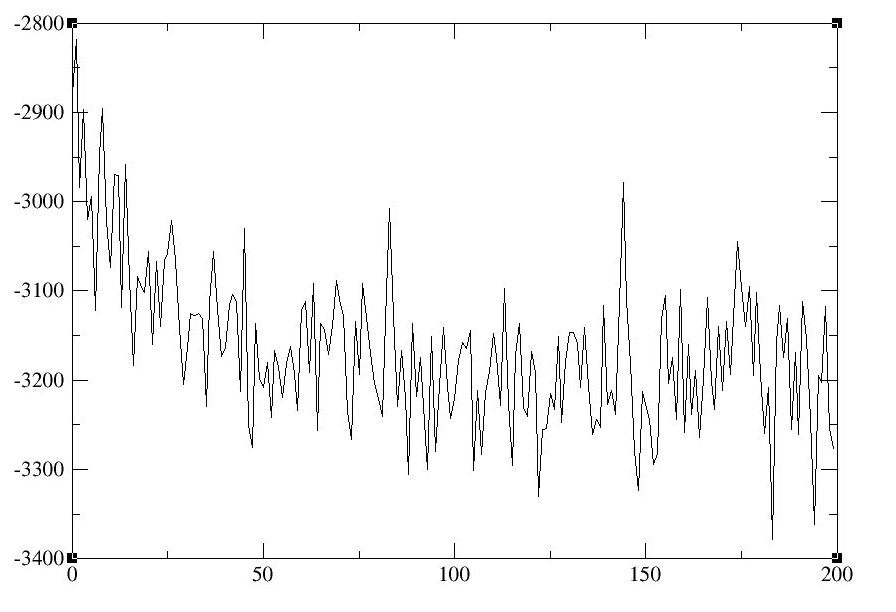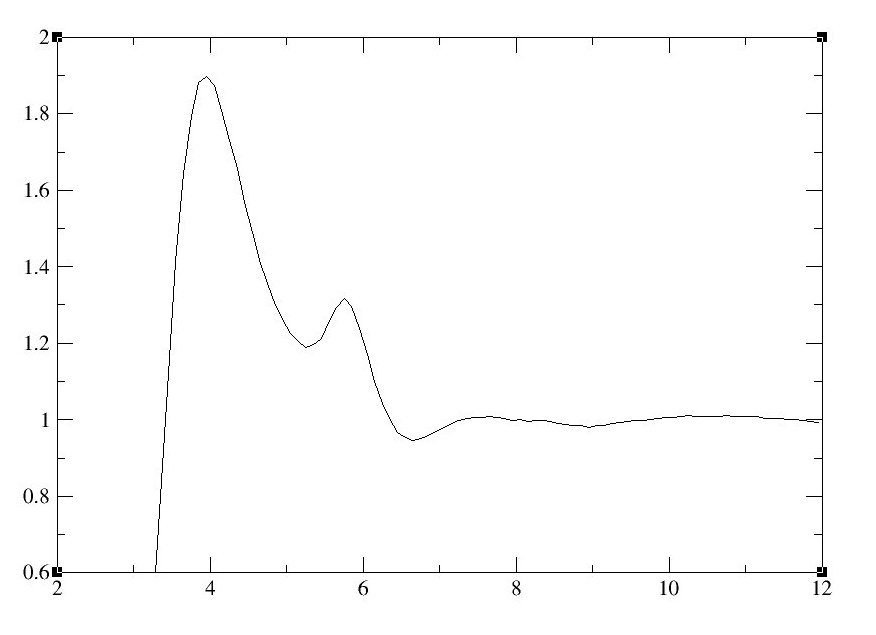教程:AMBER计算离子液体径向分布函数(RDFs)、自扩散系数...手册介绍
- 1 创建初始结构
- 1.1 用xleap绘制分子
- 1.2 创建pdb文件
- 1.3 重复步骤
- 2 Antechamber
- 2.1 产生乙腈的mol2和frcmod文件
- 2.2 硼原子的问题
- 2.3 在xLEaP中输入
- 3 Parmchk
- 4 Packmol
- 5 使用tLEaP生成Amber prmtop文件
- 6 用Sander进行最小化
- 7 运行分子动力学模拟
- 8 用ptraj成像
- 9 自扩散系数
- 10 结论
- 11 参考文献
用ptraj成像
- 2022-03-16 17:44:07
- 青
- 3096
- 最后编辑:青 于 2022-03-18 11:10:30
The box we created with packmol manifests a fundamental problem: a significant portion of the molecules is exposed to vacuum, which would yield deviations in simulation results. Under periodic boundaries, our box is “replicated” in all three dimensions so that our system represents a realistic bulk fluid. As a result, when a molecule exits the box from one side, it enters from the other. Ptraj's imaging tool repacks the molecules that left the box and gives us a proper image of what the central box looks like.
- First, analyze the Density to see if the average density is close to your target.
- To graph density data with xmgrace:
- To calculate the average density, examine the sets in xmgrace, or run the following script:
- Examine the Energy Total to see if the system is at equilibrium.
- Once the density is at target and total energy is at equilibrium, calculate Radial Distribution Functions.
In order to calculate the RDFs, we will use
ptraj, a program used to analyze sets of 3-D coordinates from input coordinate files. We will be calculating the RDF between the N1 atoms of the Acetonitrile [CH3CN]
CH3CN_N1 is the header for output file names, .1 is the bin size, 15.0 is the maximum for the histogram, and :ACN@N is the mask for selecting atoms we want to use for our analysis.
The output files that result after running the ptraj.in file will be:
CH3CN_N1_carnal.xmgr
CH3CN_N1_standard.xmgr
CH3CN_N1_volume.xmgr
The above command will open the file CH3CN_N1_volume.xmgr in xmgrace. The x axis is distance in angstroms, and g(r) gives the probablity of finding an atom (in this case, the nitrogen in acetonitrile) at a given distance (r) of another atom (another nitrogen in acetonitrile). The first peak (around four angstroms) represents the first coordination shell, and the second peak (little less than six angstroms) represents the second coordination shell.
发表评论
ICP标识
底部分享
产品
会议
学习
关于 ILPlatform
“离子液体(ILs)产学研”平台(ILPlatform),用于打造出ILs内容自由分享集散中心,基于该中心将关联到与ILs有关的各个资源,为ILs从业人员以及想了解ILs的人们提供便捷的信息获取与分享渠道,未来实现多样化终端部署,让信息传递更加及时有效...

